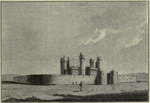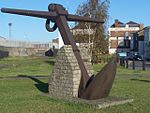Crundells Wharf
England transport stubsFormer buildings and structures in KentKent building and structure stubsPorts and harbours of KentTransport in Swale ... and 2 more
Use British English from January 2018Wharves in the United Kingdom
Crundells Wharf was a general purpose wharf once used by sailing barges bringing cargoes of timber and building materials to Queenborough near Sheerness on the Isle of Sheppey, Kent, England. Situated across the waters of the West Swale and to the north is Chetney Marshes. Here is Deadman's Island where Napoleonic prisoners who died on the prison hulks, were buried along with those who died on vessels quarantined on the nearby River Medway.
Excerpt from the Wikipedia article Crundells Wharf (License: CC BY-SA 3.0, Authors).Crundells Wharf
North Road, Borough of Swale Queenborough
Geographical coordinates (GPS) Address Phone number Website Nearby Places Show on map
Geographical coordinates (GPS)
| Latitude | Longitude |
|---|---|
| N 51.417866666667 ° | E 0.73953333333333 ° |
Address
Queenborough Harbour Office
North Road Crundell's Wharf
ME11 5EL Borough of Swale, Queenborough
England, United Kingdom
Open on Google Maps








